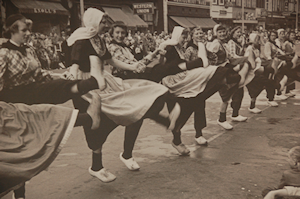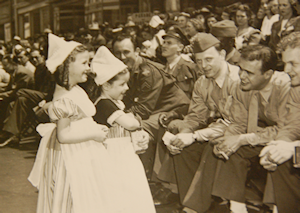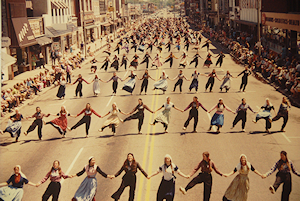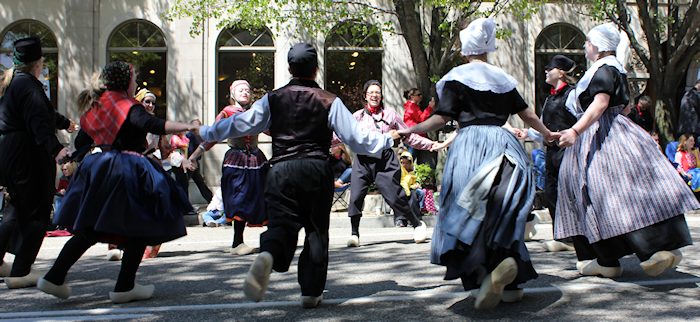Dutch Dancing

Picture yourself strolling through downtown Holland as the sound of lively Dutch music fills the air. Suddenly, the streets burst into motion — hundreds of dancers in authentic Dutch costumes twirling, kicking, and clapping in their wooden shoes (klompen). It’s a dazzling, joy-filled spectacle that delights audiences of every age.
From enthusiastic third graders to lifelong community dancers, each performer brings the tradition to life with contagious energy and pride. Their colorful costumes, spirited steps, and radiant smiles make it impossible not to tap along or cheer them on.
Whether you’re a lifelong local or a first-time visitor, the Tulip Time Dutch Dance performances are an experience you’ll never forget — a true celebration of Holland’s heritage and the vibrant spirit of its people. So find a spot along the parade route, feel the rhythm, and join in the fun!
History

The history of Dutch Dance began in 1935 with local high school girls performing at the Tulip Time Festival. They were dressed in costumes and were called “Klompen Dancers.” The precursor to these Dancers began 2 years earlier when a high school gym teacher Ethel Perry trained twelve students to perform Dutch Folk dances. The Dancers, then called the “Dutch Villagers”, performed to the tune of “Where, Oh Where, Has My Little Dog Gone?" but did not perform as part of the Festival.

Originally the dancers’ costumes were delft blue with white organdy caps and aprons. In 1953 a compilation of Dutch Folk music was created, Dutch Dance as we know it was choreographed and standards for costumes were developed. Over the years, as information became available, additional costumes were added and revisions were made.

Today’s Dancers wear costumes patterned after the traditional dress of the Dutch Provinces. Each costume is handmade by local seamstresses and carefully inspected before it can be worn in the Dutch Dance performances.

